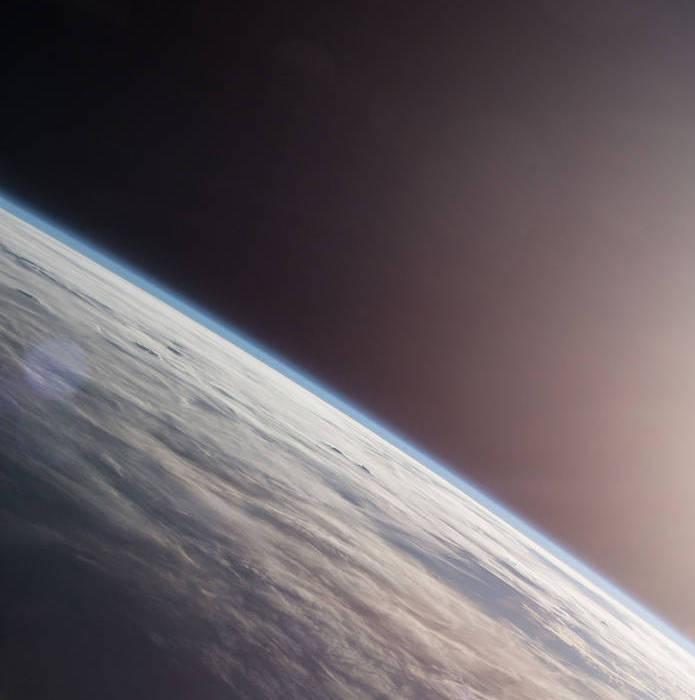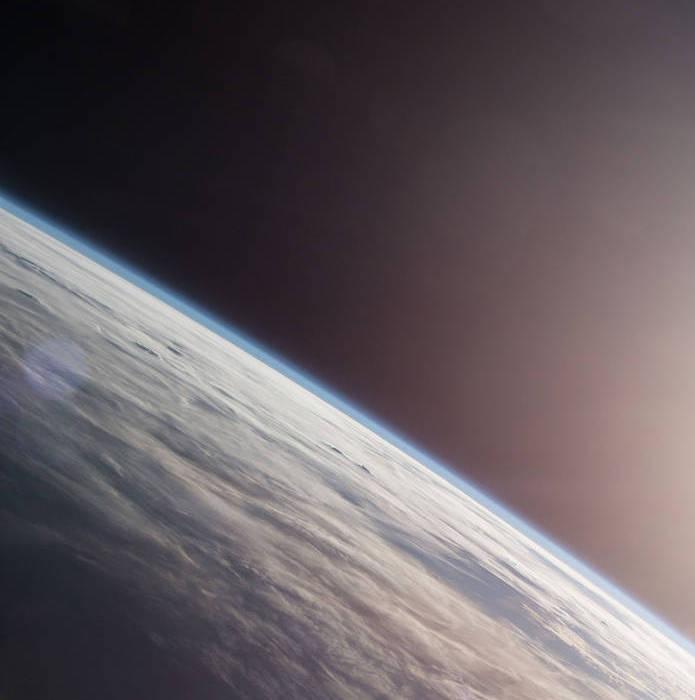
Credit: NASA
The planet is warming at an unprecedented rate and reducing emissions of greenhouse gasses alone is not enough to remove the risk.
Last year's historic Paris climate agreement set the goal of keeping global temperatures no higher than 1.5 degrees Celsius above the preindustrial levels. Emission reductions will be central to achieving that goal, but supplemental efforts can further reduce risks
One drastic idea is solar geoengineering — injecting light-reflecting sulfate aerosols into the stratosphere to cool the planet. Researchers know that large amounts of aerosols can significantly cool the planet; the effect has been observed after large volcanic eruptions. But these sulfate aerosols also carry significant risks. The biggest known risk is that they produce sulfuric acid in the stratosphere, which damages ozone. Since the ozone layer absorbs ultraviolet light from the sun, ozone layer depletion can lead to increased rates skin cancer, eye damage and other adverse consequences.
Now, researchers from the Harvard John A. Paulson School of Engineering and Applied Sciences (SEAS) have identified an aerosol for solar geoengineering that may be able to cool the planet while simultaneously repairing ozone damage.
The research is published in the Proceedings of the National Academy of Sciences.
"In solar geoengineering research, introducing sulfuric acid into the atmosphere has been the only idea that had any serious traction until now," said David Keith, the Gordon McKay Professor of Applied Physics at SEAS and Professor of Public Policy at the Harvard Kennedy School and first author of the paper. "This research is a turning point and an important step in analyzing and reducing certain risks of solar geoengineering."
This research fundamentally rethinks what kinds of particles should be used for solar geoengineering, said Frank Keutsch, the Stonington Professor of Engineering and Atmospheric Science at SEAS and Professor of Chemistry and Chemical Biology and coauthor of the paper.
Previous research focused on ways to limit the ozone-damaging reactions produced by nonreactive aerosols. But Keutsch and Keith, along with coauthors Debra Weisenstein and John Dykema, took a completely different approach, targeting aerosols that are highly reactive.
"Anytime you introduce even initially unreactive surfaces into the stratosphere, you get reactions that ultimately result in ozone destruction as they are coated with sulfuric acid," said Keutsch. "Instead of trying to minimize the reactivity of the aerosol, we wanted a material that is highly reactive but in a way that would avoid ozone destruction."
In order to keep aerosols from harming the ozone, the particles would need to neutralize sulfuric, nitric, and hydrochloric acid on their surface. To find such a particle, Keutsch turned to his handy Periodic Table. After eliminating the toxic elements, the finicky and rare metals, the team was left with the Alkali and Alkaline Earth Metals, which included sodium and calcium carbonate.
"Essentially, we ended up with an antacid for the stratosphere," said Keutsch.
Through extensive modeling of stratospheric chemistry, the team found that calcite, a constituent of limestone, could counter ozone loss by neutralizing emissions-borne acids in the atmosphere, while also reflecting light and cooling the planet.
"Calcite is one of the most common compounds found in the earth's crust," said Keith. "The amounts that would be used in a solar geoengineering application are small compared to what's found in surface dust,"
The researchers have already begun testing calcite in lab experiments that mimic stratospheric conditions. Keith and Keutsch caution that anything introduced into the atmosphere may have unanticipated consequences.
"Stratospheric chemistry is complicated and we don't understand everything about it," Keith said. "There are ways that this approach could increase global ozone but at the same time, because of the climate dynamics in the polar regions, increase the ozone hole."
The researchers emphasize that even if all the attendant risks could be reduced to acceptable levels, solar geoengineering is not a solution to climate change.
"Geoengineering is like taking painkillers," said Keutsch. "When things are really bad, painkillers can help but they don't address the cause of a disease and they may cause more harm than good. We really don't know the effects of geoengineering but that is why we're doing this research."
###
The research is supported by the Fund for Innovative Climate and Engineering Research and the Star Family Challenge for Promising Scientific Research.
Keith and Keutsch are among several faculty who will be part of the Harvard's Solar Geoengineering Research Program, a new university-wide, interdisciplinary research effort that will be launched in the spring. Housed within the Harvard University Center for the Environment, it will be one of the largest and most visible solar geoengineering research initiatives.
Media Contact
Leah Burrows
[email protected]
617-496-1351
@hseas
http://www.seas.harvard.edu/
############
Story Source: Materials provided by Scienmag





